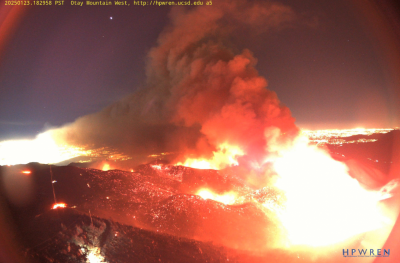BE A WEATHER-WATCHING GARDENER
By Melinda Myers
Photo: rain barrels can help manage the water on your property and provide water to use in your gardens. Photo courtesy melindamyers.com
January 14, 2025 (San Diego’s East County) -- Each gardening season seems to offer new growing challenges. Our gardens are exposed to more drastic and variable weather with changing weather patterns. Floods, droughts, wind, temperature extremes, and unseasonable weather episodes can have immediate and long-term impacts on our plants.
- Read more about BE A WEATHER-WATCHING GARDENER
- Log in or register to post comments

 Update 8:46 p.m.-- The fire is now 600 acres, per Watch Duty App. No structures are currently threatened.
Update 8:46 p.m.-- The fire is now 600 acres, per Watch Duty App. No structures are currently threatened.